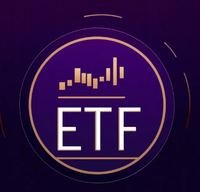PFIX.P Breaks Through 52-Week High of $65.1521 Amid Rising Interest Rate Concerns
The Simplify Interest Rate Hedge ETF (PFIX.P) aims to provide investors with a hedge against a sharp increase in long-term interest rates by actively managing a portfolio that includes OTC interest rate options, US Treasurys, and US Treasury Inflation-Protected Securities (TIPS). Recently, this ETF has experienced significant inflows, with a total net fund flow of $866,602.95, including $794,884.04 from
orders and $785,535.49 from extra-large orders, indicating strong institutional interest and confidence in its strategy.The recent surge to a new 52-week high of $65.1521 can be attributed to growing concerns over potential interest rate hikes, which have driven investors to seek protective strategies that
.P offers. This has amplified demand for the ETF as investors look for ways to hedge against rising rates.From a technical perspective, the ETF is currently facing a KDJ dead cross signal, indicating a potential bearish trend. This suggests that while the ETF has reached a new high, there may be a short-term pullback as the market adjusts to the current price levels. However, the absence of signals such as golden crosses or oversold conditions suggests that the ETF is not yet in a position for a significant correction.
While PFIX.P presents a compelling investment opportunity as a hedge against interest rate increases, investors should be cautious of the potential challenges ahead, such as the technical indicators suggesting a possible short-term decline. The strong fund flows indicate confidence, but market sentiment can shift quickly, especially in response to economic data or changes in monetary policy.


Comments
No comments yet